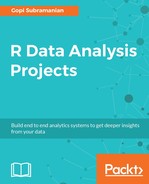If project funding is adequate or project staffing is small then risk is low.
This rule has an OR clause, its evaluated using UNION operator. Max operator in set is used to evaluate this rule. There are several other set operators such as ASUM or BSUM which can be used to evaluate the UNION (OR) operator.
Let us borrow the fuzzification results from the previous section. The fuzzification of project funding = adequate for crisp value 35% is 0.0. The fuzzification of project staffing = small for crisp value 60% is 0.1
Let us use the Max operator Maximum among them is taken as the results, hence the this rule evaluates to, Project Risk = low = 0.1
The next rule, If project funding is marginal and project staffing is large then risk is normal, has an AND and hence we use an intersection operator. Intersection operator can be handled using min, prod or bdif set operator.
The fuzzification of project funding = marginal for crisp value 35% is 0.2. The fuzzification of project staffing =large for crisp value 35% is 0.7. Let us use the min operator here. The minimum is 0.2, the rule evaluates to Project risk = normal = 0.2
Finally, the last rule, If project funding is inadequate then risk his high. We can directly say
Project Risk = high = 0.5, as this is the fuzzification value for project funding = inadequate for crisp value of 35%.
Now we need to combine these results. This process of evaluating the rules and combining them is called as inference.
We have, for project risk, low = 0.1, normal = 0.2, and high = 0.5. We will use these values to scale the membership function. The final decision plot is a summation of all these scaled values.
Let us look at the decision plot:

